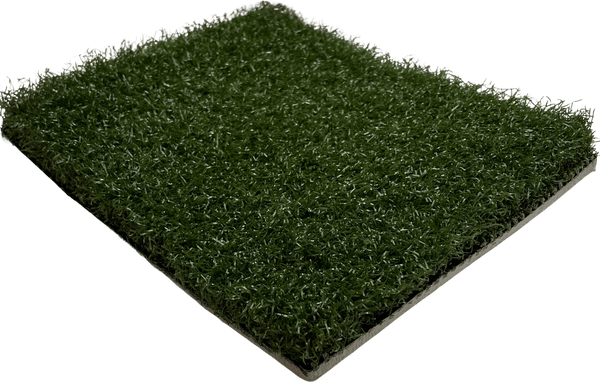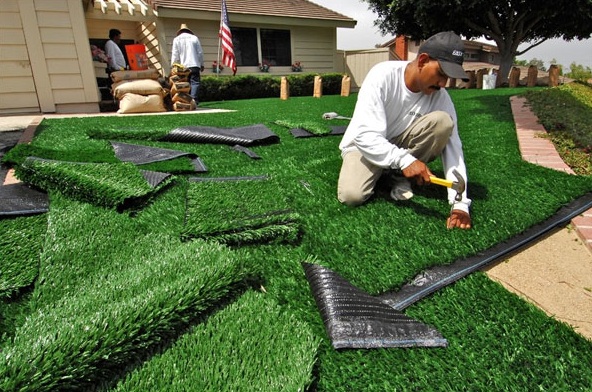Top-Grade Arizona Turf Solutions for a Stunning and Green Landscape
Top-Grade Arizona Turf Solutions for a Stunning and Green Landscape
Blog Article
Explore the Environmental Benefits of Opting for Artificial Grass Solutions
The fostering of synthetic grass remedies provides a compelling chance to resolve pushing ecological obstacles. By dramatically reducing water use and reducing the application of unsafe chemicals, these alternatives not only advertise sustainable landscape design but also secure regional communities. In addition, the lower carbon footprint related to decreased maintenance activities adds to a more sustainable method to land administration. Nonetheless, the implications of these benefits extend past simple preservation efforts, increasing concerns concerning their long-lasting effect on environment preservation and total environmental balance. Discovering these dimensions exposes an intricate interaction worth taking into consideration.
Water Preservation Benefits
One of the most considerable benefits of synthetic grass is its capability to conserve water. Conventional lawn yards call for substantial irrigation, especially in areas prone to drought or water limitations. In contrast, synthetic grass does not need watering, substantially decreasing the overall demand for water sources. This function is especially helpful in dry areas where water deficiency is a pressing worry.
By removing the requirement for normal watering, synthetic turf adds to lasting landscape practices and assists minimize the environmental influence of excessive water intake. Additionally, the conservation of water includes the decrease of overflow, which can lead to soil erosion and river pollution.
Additionally, the setup of synthetic grass allows house owners and municipalities to designate water sources extra efficiently, concentrating on essential uses such as drinking water and agriculture. The change in the direction of synthetic grass not just promotes accountable water usage however likewise lines up with wider environmental goals targeted at maintaining all-natural sources.
As neighborhoods significantly prioritize sustainability, the water conservation advantages of fabricated turf provide a compelling case for its fostering in commercial and residential landscape design projects.
Decreased Chemical Usage
The transition to synthetic grass substantially decreases the dependence on chemical therapies generally made use of in natural grass maintenance. Standard turf monitoring usually entails the application of chemicals, herbicides, and plant foods to promote development and control bugs. These chemicals can pose risks to human wellness, local wild animals, and the environment, adding to dirt and water contamination.
In comparison, fabricated turf removes the demand for these dangerous substances. As soon as mounted, it requires very little upkeep, largely including normal cleansing and infrequent infill replenishment. This reduction in chemical use not only benefits the immediate environment however additionally adds to broader eco-friendly security. By reducing the release of artificial substances into the community, synthetic grass promotes healthier soil and water supply.
In addition, the absence of chemical runoff connected with artificial grass installments aids shield regional rivers from air pollution, sustaining marine life and maintaining biodiversity. Arizona artificial turf. As areas increasingly focus on lasting practices, selecting synthetic grass presents a sensible remedy that straightens with environmental preservation objectives. With this change, building proprietors can take pleasure in rich environment-friendly rooms without endangering eco-friendly wellness, leading the means for a much more sustainable future
Reduced Carbon Impact

Moreover, the installation of synthetic grass can cause substantial water conservation. All-natural lawns call for considerable amounts of water for watering, which not only includes to the carbon footprint related to water removal and treatment yet also stress neighborhood water resources. In comparison, synthetic grass needs marginal upkeep, requiring no watering, therefore significantly reducing water use and its connected energy prices.
Additionally, the durability of man-made lawn adds to its lower carbon impact. With a lifespan of up to 15 years or more, the need for constant replacements is diminished, resulting in less waste and reduced power usage in manufacturing and dealing with conventional lawn alternatives. Overall, artificial grass presents a sustainable option for environmentally mindful landscaping.
Habitat Conservation
Environment conservation is a vital consideration in the argument over landscaping options, specifically when contrasting synthetic grass to all-natural yard. All-natural turf lawns often require extensive maintenance, including using herbicides, pesticides, and fertilizers, that site which can detrimentally influence neighborhood ecosystems. These chemicals can seep into the dirt and waterways, harming indigenous flora and animals and disrupting neighborhood habitats.
In comparison, man-made lawn offers a chance to lower the environmental impact of landscaping. By deciding for artificial turf, homeowners can minimize the interruption of all-natural habitats related to standard lawn treatment techniques. Synthetic grass removes the requirement for hazardous chemicals, consequently shielding neighboring wild animals and maintaining the stability of bordering ecosystems. Additionally, the installment of synthetic grass can cause the conversion of previous grass areas into more biodiverse landscapes, such as pollinator gardens or indigenous plant locations, which can sustain neighborhood wild animals.
Ultimately, the shift to man-made lawn not only conserves water and lowers upkeep efforts yet additionally promotes a much more harmonious relationship in between human tasks and the native environment, promoting habitat preservation while doing so.
Long-Term Sustainability
Long-lasting sustainability is a crucial consider reviewing the advantages of synthetic turf over typical lawn lawns. Among the most significant benefits of man-made grass is its sturdiness; it can last as much as 15-20 years with minimal upkeep, whereas natural grass needs regular reseeding and substitute. This durability reduces the demand for consistent resources, such as water, plant foods, and chemicals, which are necessary for keeping a healthy yard lawn.
In click for more addition, synthetic grass adds to a decrease in carbon discharges connected with lawn treatment tools. Standard yards commonly require gas-powered mowers, leaners, and blowers, all of which add to air pollution. Artificial turf companies phoenix. On the other hand, man-made turf removes the requirement for such tools, promoting a cleaner environment
In addition, the production of synthetic grass increasingly utilizes recycled materials, improving its sustainability profile. As manufacturers adopt eco-friendly practices, the environmental impact of synthetic grass remains to decrease.

Conclusion
The adoption of synthetic grass options provides substantial ecological benefits, consisting of significant water conservation, reduced dependence on damaging chemicals, and a reduced carbon footprint. Fabricated lawn help in protecting all-natural environments by decreasing land disruption and promoting long-term sustainability with the usage of long lasting materials. Jointly, these variables underscore the capacity of man-made lawn to add positively to environmental wellness and offer a sensible alternative to conventional landscape design techniques in a progressively resource-conscious world.
In comparison, fabricated lawn does not need watering, considerably reducing the total demand for water resources. By reducing the release of artificial compounds into the ecological community, fabricated grass promotes much healthier soil and water systems.
Furthermore, the installation of synthetic lawn can result in considerable water conservation. In comparison, man-made grass requires minimal upkeep, calling for no watering, thereby considerably minimizing water usage and its linked power prices.

Report this page